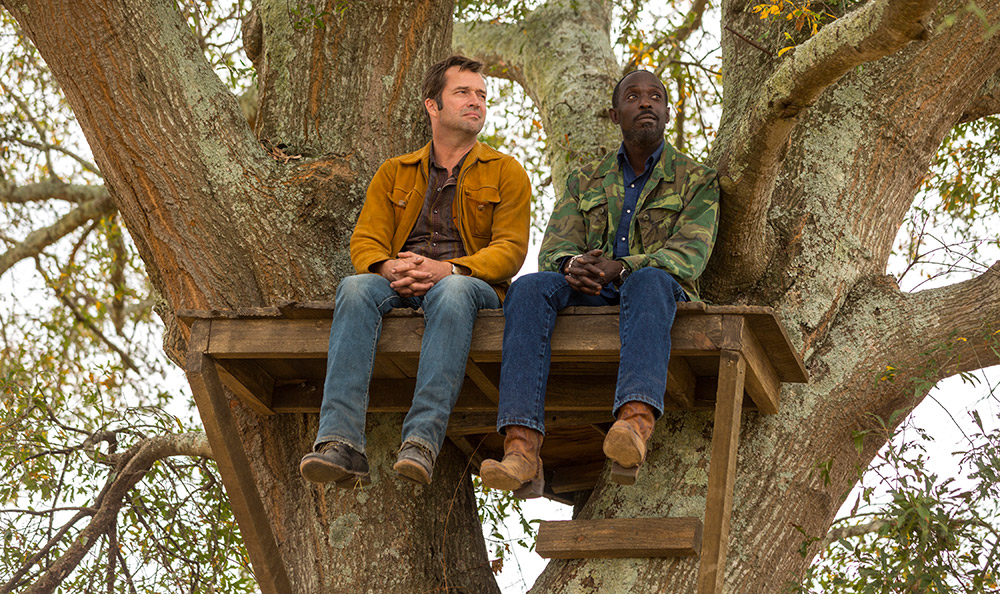I really enjoyed the first season of Hap & Leonard last year. It was surreal and weird and violent and funny and touching. The bad guys were kinda crazy and there was a touch of – well, not the supernatural, but other-worldly, at least, to it.
The issues of racism in the 1950s and 1980s were definitely touched on. We learned that Hap & Leonard became inseparable buddies when Hap’s dad stopped in the pouring rain one night when they were both boys to help Leonard’s dad fix his car. A white teen killed them in a hit and run (he’s now the judge).
Leonard is not only black, but also gay, so the bigotry he faces is twofold, even from family. Hap, who is white, is his best friend and is heterosexual. His love for his childhood friend is real and deep.
This season, however, put racism front and center – both from the 1920s or 30s? and the 1980s. In flashback, we see the KKK burning a black church to the ground when a dozen or more children were in the basement, killing all. The pastor is then lynched. One girl survives because she was playing hide and seek, and didn’t know what was happening until it was all over.
This girl is Leonard’s Meemaw. She has carried the guilt of being the lone survivor to this day. Today, though, Leonard is suspected of a murder after the desiccated remains of a child are found (by Leonard, by the way) under his house. Until recently, the house belonged to his uncle, who died and left it to him.
Leonard doesn’t want to call the police because he knows he, as a black man, is going to be the prime suspect. They call the police anyhow, and through the season, the duo investigate the case themselves.
What they find is that over the past 17 years or so, many young black children have disappeared and police haven’t investigated. They suspect at least some of these cases are related, and are right – more than a dozen bodies are found in coffins in the basement of the church.
This post isn’t about the plot, however. This is about the theme running through the season.
We see how Leonard fears he will be targeted by police because of his race, and how that comes to fruition. We see how dozens of black children have gone missing over the years and police fail to investigate. We see how the violence of the KKK in childhood haunts its survivors many decades later. We see the everyday racism and homophobia faced by Leonard and others – even deeper, one character is a young black boy who is albino, so he is ostracized by white people and by black people.
It’s such a valuable window into racism that’s never really gone away. Seeing it through the prism of little children makes it stab you in the heart all the more: The victims of American racism included the very youngest and most innocent of them all.
The racism of the 1980s seemed not to be as “bad” as the lynchings of the KKK decades earlier. But it still carries a cost, and we need to have a reckoning with how our society has failed too many of our own.
